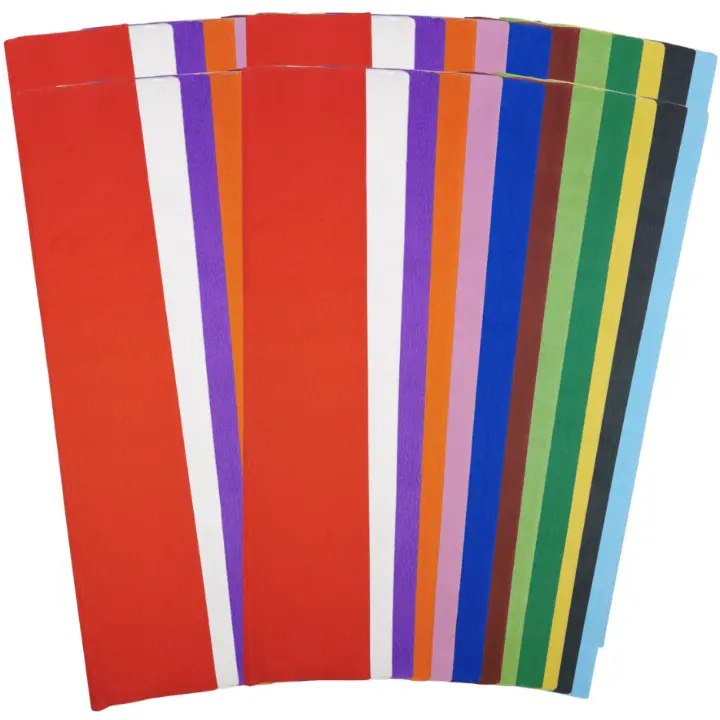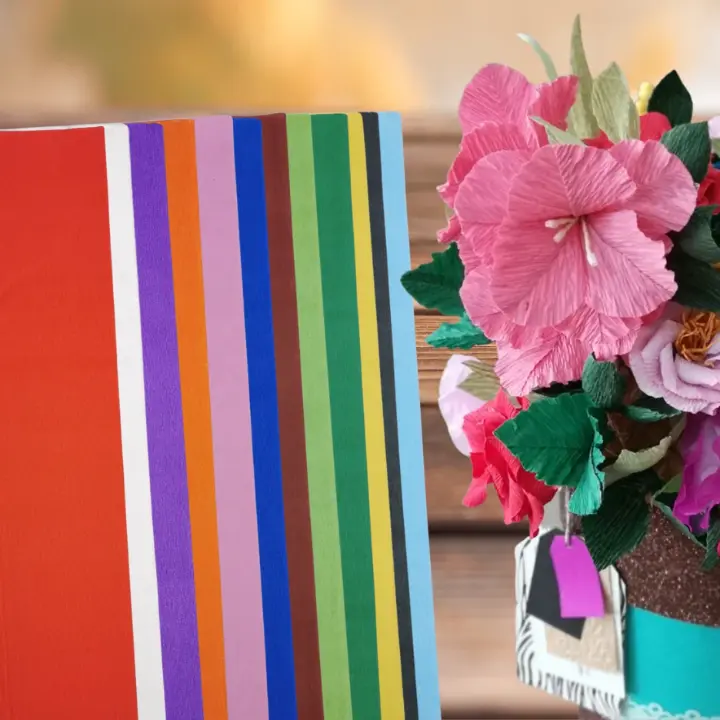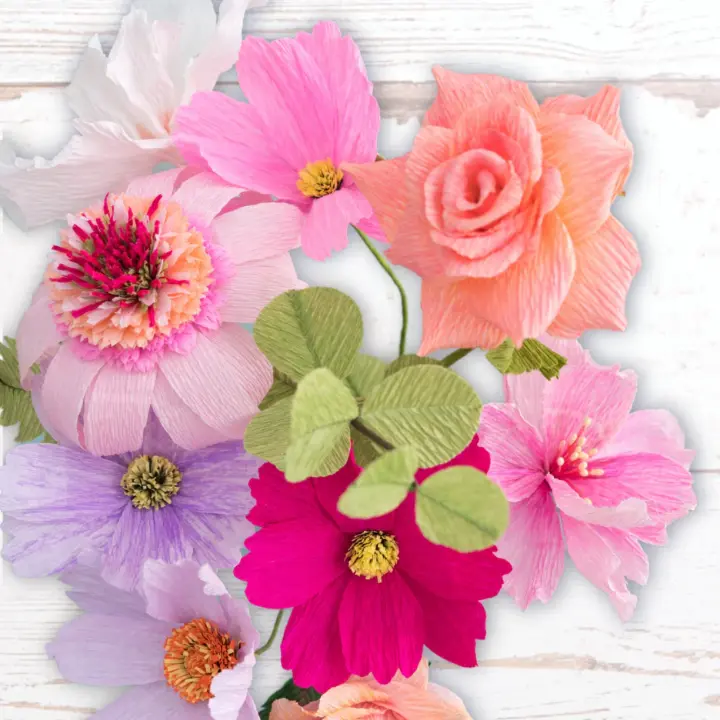Have you ever attempted to make paper flowers only to find out that they turned out to be flat, flimsy and more like craft projects than actual flowers? This is a common struggle.
Crepe paper can be a remarkable material for making realistic petals and leaves, but it often misses the mark without the proper technique. The paper rips too easily, the petals appear rigid, and the flower as a whole lacks the realism and dimensionality of its natural counterpart.
Conversely, if it is done correctly, crepe paper can capture the delicate shape and curvature of petals, the surface of leaves, and the vibrant colors of real flowers.
In this article, we will walk you step by step through the process of creating realistic crepe paper flowers so your designs will look detailed, elegant, and full of life.
1. Prepare Your Supplies

Start with quality crepe paper sheets. The larger size (50cm × 300cm) will give you plenty of roll to cut petals, leaves and stems, while limiting waste. Choose colors that reflect the flower you are making, i.e., softer pastels for roses, vibrant red for poppies, or bright sunshine yellow for sunflowers.
For example, when making roses, you can make soft pastels, bright reds with poppies, or bright yellows with sunflowers.
You’ll also need:
- Sharp scissors
- Floral wire and tape
- A glue gun or tacky craft glue
- A pencil for shaping curls
- Optional: pastels or watercolor for shading
By having everything prepared from the beginning, you ensure your process is seamless and uninterrupted. It is also important to use quality crepe paper because it shapes well, stretches evenly, and gives your flowers that natural look you’re looking for.
2. Choose a Flower to Recreate

Begin with a basic flower, such as a daisy or poppy, then experiment with roses or peonies. Look closely at the reference photo.
How many petals are there?
How do the petals overlap?
And what is the shape of the flower center?
These are important details that you’ll use when cutting the petals and assembling the flower.
3. Cut Petals and Leaves to Shape
To cut multiple petals at once, fold your crepe paper. For a more authentic look, ensure that your petals are not identical- having slight deviations will just seem more real. When shaping your petals, ensure that they are tapered at the base and more rounded at the top. For leaves, use a more oval shape with a pointed tip.
Always cut the paper along the grain. This will allow you to stretch and shape the pieces later without compromising their integrity.
4. Stretch and Shape the Petals
This is where the petals begin to blossom. Gently pull the center of each petal until it naturally curves. You can use your thumbs to help you cup it into a smooth arc. For an extra dimension, roll the edges on a pencil or curl them outward with your fingers.
Shaping is important because it adds dimension and helps the flower from looking flat. Take your time. If you pull too hard, you could tear the paper.
5. Build the Flower Center
The center establishes the foundation for the entire bloom. For a bud or stamen cluster, take a small piece of yellow or contrasting crepe paper and wrap it around the end of a floral wire. You can secure it with floral tape. For daisies, round out the paper into a disk, and for roses, use very tight wrapping to create a bud.
A realistic-looking center adds a natural point of interest to the flower.
6. Attach and Layer the Petals
Affix each petal around the flower center, using glue or floral tape, as required. Bunch the petals slightly in overlapping angles for a natural-looking full bloom.
Generally, many simpler flowers will only have one layer, while more complex flowers often will need two and may have larger petals added when layering outward. Take your time to allow the petals to unfold as they would, and avoid having the petals sit uniformly and stiffly in rows.
7. Add Leaves and Finish the Stem
Take green crepe paper and cut it into leaf shapes. Gently stretch the paper out to create some texture in the leaves. Attach these leaves around where the flower is attached to the stem using floral tape. Finally, wrap the remaining part of the stem with the green crepe or floral tape to cover the wire fully. This last step adds a more polished and professional look.
8. Add Color and Detail

Create some realistic aspects with close shading. You will use soft pastels or lightly diluted watercolor to darken the edges, deepen the base, or suggest very fine veins on the leaves. These small details make the flower more realistic.
After the color dries, gently manipulate the petals until they open in a natural way. Your crepe paper flower is finished and will now hang on display.
Final Thought
Making real crepe paper flowers is more than simply cutting shapes; it is a matter of studying nature and reproducing its elements with sensitivity. With proper materials, molding, and piling up, you can create flowers that are as beautiful as natural flowers.
As you craft, you’ll go from simple daisies to elaborate roses and peonies, all with the realistic beauty only crepe paper can impart. Begin with one flower today, and before long, you’ll have a bouquet that will never wilt.
How To Create Realistic Flowers With Crepe Paper